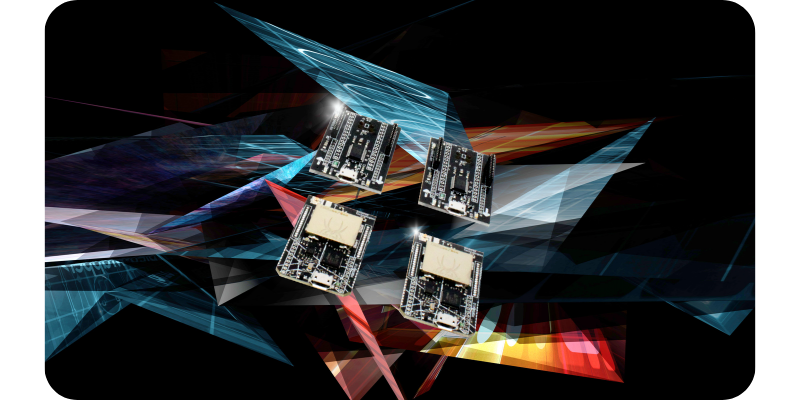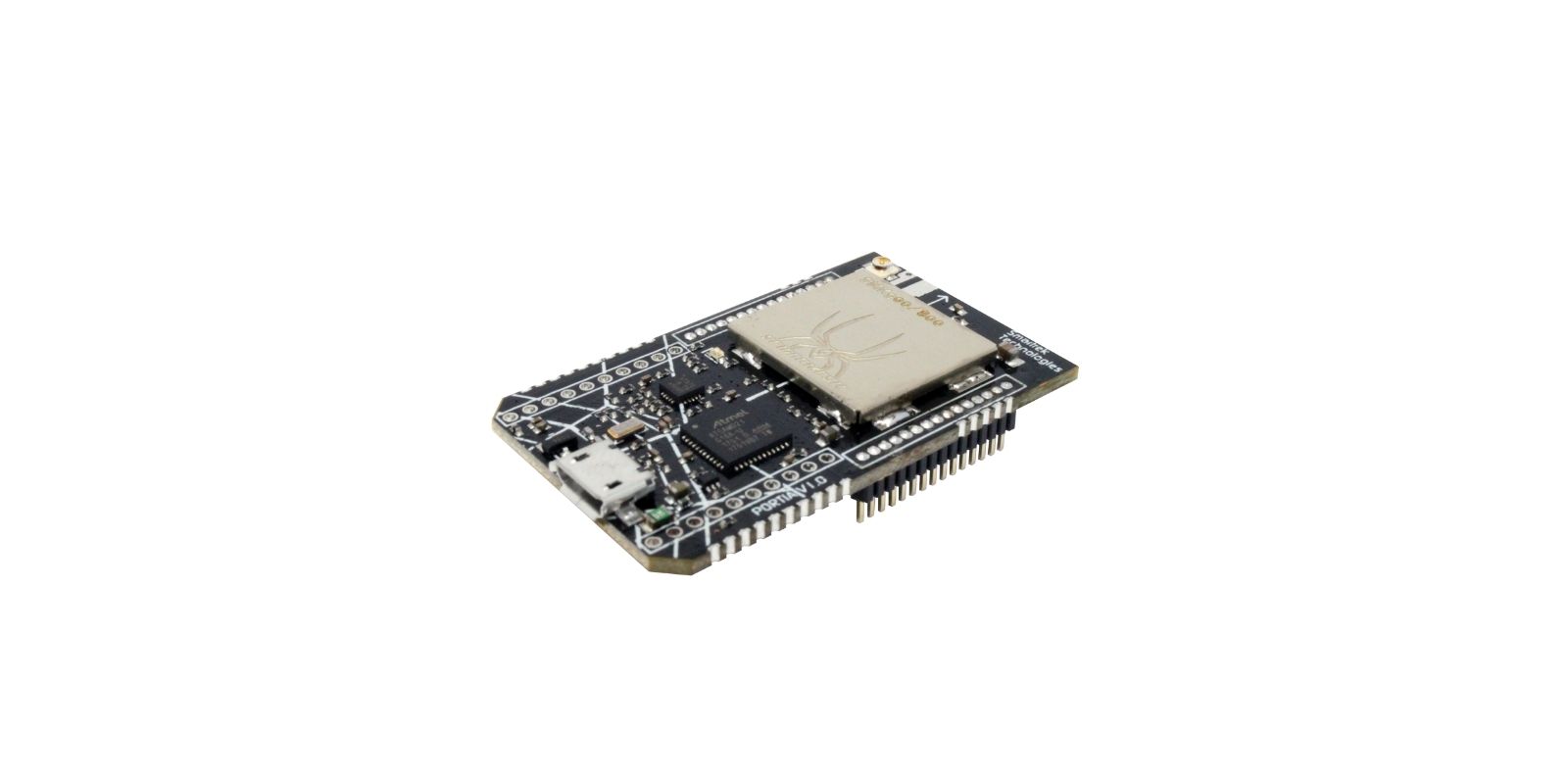
Powered by SpiderMesh cooperative mesh network technology
PORTIA radio transceivers provide an extremely high wireless network range. To achieve this, radios use the proprietary SPIDERMESH technology, a cooperative mesh wireless protocol developed by Smartrek Technologies. This protocol provides synchronous communication between the links to mitigate network contention issues. As a result, this strategy allows PORTIA radios to offer a connectivity solution for the most challenging applications.
Each radio can be configured either as a gateway or a node. Gateways control the entire mesh network by coordinating wireless data exchanges. Furthermore, they also act as a bridge between mesh networks and a host such as a computer, tablet, or internet gateway.
The nodes act as repeaters within the linked networks. Data transfer is bidirectional; thus, nodes allow for controlling and/or reading digital/analog external modules, connecting them to the mesh network. Additionally, activating a link in the field only requires the node to be on the same radio frequency channel as the network during deployment. Consequently, this considerably reduces installation complexity as no technical knowledge is required for its use.
It is time to turn to our Radio Portia Module
Embedded systems such as our Portia Radio Module are a real source of opportunities, regardless of your environment or field (smart city, water management, public lighting, agricultural plantation, etc.). Our monitoring and tracking systems are the ideal partners for your environment, thanks to their ease of use and extreme resistance.
Adapted
Flexible
Support
Security
Quality of Service
Innovation
Pioneer in its field, our radio module Portia is a true innovation
Module specifications :
| Dimension | 1.140″ x 1.890″ (29mm x 48mm) |
|---|---|
| Operating Temperature | -20 to 70C guaranteed for max hop count/ -40 to 85C for half hop count |
| Storage Temperature | -40 to 85C |
| Antenna Connector | U.fl |
| Encryption | AES 128 bits |
| Virtual Machine memory | 16 kBytes |
| Internal Modules | 1x TTL Serial port, 13x GPIOs, 1x SPI, 1x I2C, 2x ADC channels, 1x channel |
| Serial Baud Rate | 2400, 4800, 9600, 19200, 38400, 57600, 115200, 125000 |
| Coprocessor | 8 kBytes flash memory, 128 bytes EEPROM, 512 bytes SRAM |
Portia Versions
Europe: ETSI 869 Mhz standard frequencies
Portia Versions
North America: FCC 915 MHz ISM standard frequencies
| Transceiver | |
|---|---|
| Urban / Indoor / NLOS* | 100 – 500m |
| Outdoor / LOS** | > 10 km |
| Transmit Power | Low : 25 mW High : 100 mW |
| RF Data Rate | 50 kbits |
| Nb. of Channels | 5 |
| Frequency (Mhz) | 869.425 à 869.625 Mhz |
| Receiver Sensitivity | -110 dBm |
| ELECTRICAL CHARACTERISTICS | |
| Supply | 3.3 – 6.5V |
| All input/Output pins | -0.5 to 3.3V |
| Transmit Current | 130 mA peak |
| Receive Current | 20 mA |
| Sleep | 30 uA |
| Transceiver | |
|---|---|
| Urban / Indoor / NLOS* | 100-500m |
| Outdoor / LOS** | > 10 km |
| Transmit Power | Low: 50 mW High: 100 mW |
| RF Data Rate | 50 kbits |
| Nb. of Channels | 6 |
| Frequency (MHz) | 902 to 928 Mhz |
| Receiver Sensitivity | -110 dBm |
| ELECTRICAL CHARACTERISTICS | |
| Supply | 3.3 – 6.5V |
| All input/Output pins | -0.5 to 3.3V |
| Transmit Current | 130 mA peak |
| Receive Current | 20 mA |
| Sleep | 30 uA |
*NLOS : None Line of Sight / **LOS : Line of Sight

Module performance :
The mesh network algorithm synchronizes all wireless communications over time. This reduces energy consumption to achieve very long network operating time. Most applications can reach an autonomy ranging from 12 to 48+ months per link, depending on the battery type, capacity, and network refresh time. With these low energy specifications, PORTIA radios offer a powerful solution for object connectivity.
Serial Interface :
PORTIA radios have 2 serial communication modes to interact with the mesh network. The first mode is transparent and all data received on the serial port of a node will be transmitted to all other nodes. The second mode uses a programming interface (API). Messages transmitted on the serial port contain an address and a command which allows you to specify a node or to communicate to all nodes simultaneously.
Virtual machine and over-the-air updates :
PORTIA radios feature an embedded virtual machine allowing over-the-air firmware updates. This allows application-specific user scripting to control the internal modules of the PORTIA radio and ease interfacing with external sensors, without needing supplementary glue logic. The execution of the virtual machine is made possible by sharing the resources of the main processor used for wireless communications.
Hardware :
PORTIA radios are equipped with a serial port, digital and analog inputs/outputs, I2C and SPI communication ports. They also feature Xbee footprint compatible connectors in order to reduce friction when migrating existing systems to SpiderMesh enabled PORTIA radios. For tasks requiring real-time execution, a co-processor is made available in addition to the main processor.
